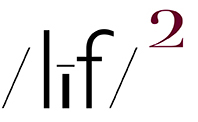Santa FE, New Mexico ~ all photos (embiggenable)
Chicago, Illinois
Denver, Colorado
Santa Fe, New Mexico
Jemez, New Mexico
Trinidad, Colorado
Trinidad, Colorado
“Consulting the rules of composition before taking a photograph is like consulting the laws of gravity before going for a walk. / Composition is the strongest way of seeing.” / Following rules of composition can only lead to a tedious repetition of pictorial clichés.”~ Edward Weston
IF I WERE TO BE GIVEN THE AUTHORITY TO eradicate a word from the photography lexicon, that word would “composition”. If I were asked to give a rationale for that act, I would quote Ansel Adams’ idea that:
“There are no rules for good photographs, there are only good photographs.”
As an adjunct to my Composition Eradication Decree, I would also create a special space in the fiery after/underworld for anyone who would try to reintroduce the composition concept with the visual aid of a photographic print with lines / arrows, aka: diagrams, drawn all over the surface of the print in an attempt to demonstrate how “good” composition “works.”
Or, maybe it would just be easier to give them all Red Rider BB guns and hope they will shoot their eye out. That’d fix ‘em up plenty good.
ASIDE if ya wanna get fixed up plenty good, Trinidad, Colorado is a good place to get a “fix”. Right there on Main Street––easy off, easy on, Interstate 25––is a well stocked liquor store and a cannabis dispensary right next to each other. Both were open early Sunday morning––serving your intoxicant needs on the lord’s day of rest––when we stopped in Trinidad looking for a grocery store during our drive to Jemez, New Mexico. END ASIDE

